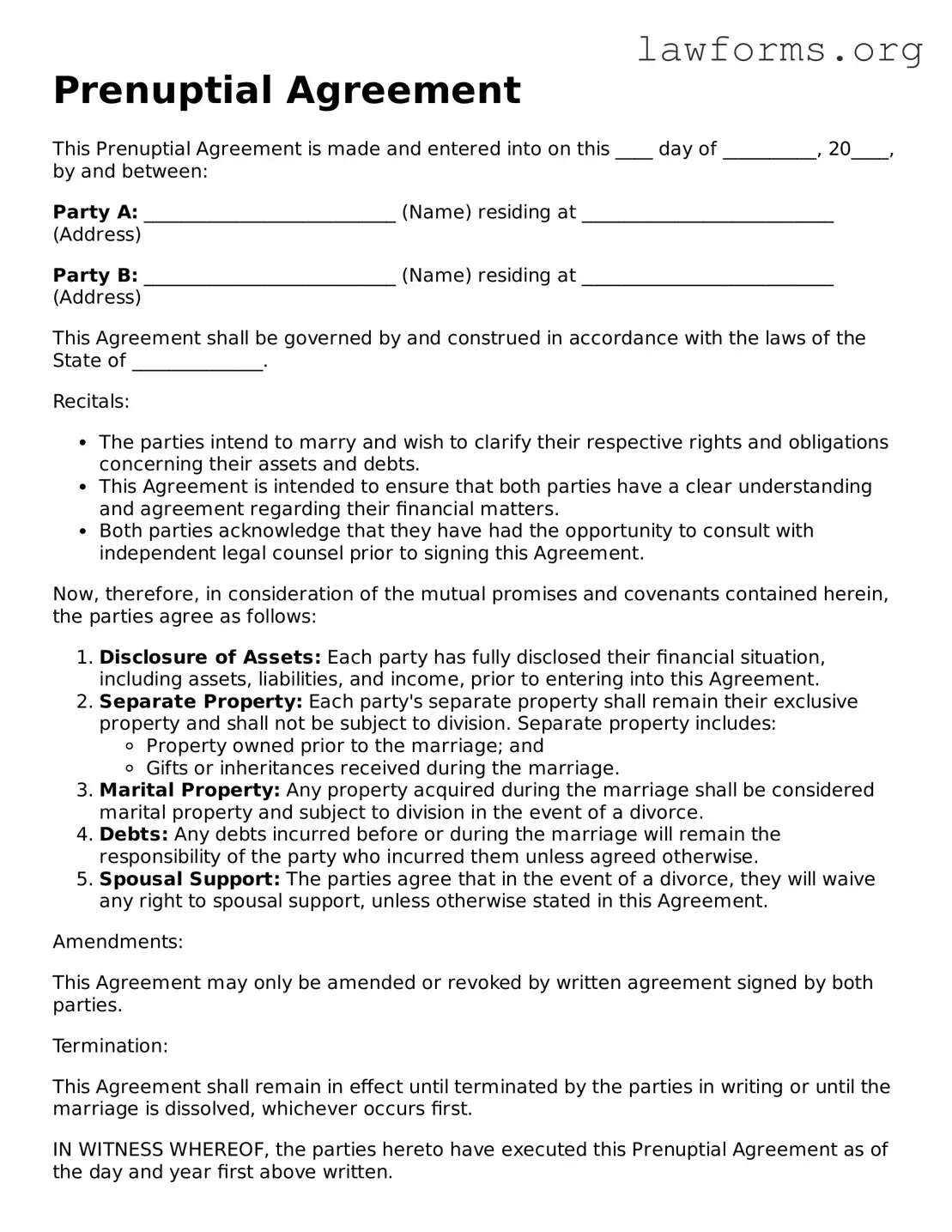Prenuptial Agreement
This Prenuptial Agreement is made and entered into on this ____ day of __________, 20____, by and between:
Party A: ___________________________ (Name) residing at ___________________________ (Address)
Party B: ___________________________ (Name) residing at ___________________________ (Address)
This Agreement shall be governed by and construed in accordance with the laws of the State of ______________.
Recitals:
- The parties intend to marry and wish to clarify their respective rights and obligations concerning their assets and debts.
- This Agreement is intended to ensure that both parties have a clear understanding and agreement regarding their financial matters.
- Both parties acknowledge that they have had the opportunity to consult with independent legal counsel prior to signing this Agreement.
Now, therefore, in consideration of the mutual promises and covenants contained herein, the parties agree as follows:
- Disclosure of Assets: Each party has fully disclosed their financial situation, including assets, liabilities, and income, prior to entering into this Agreement.
- Separate Property: Each party's separate property shall remain their exclusive property and shall not be subject to division. Separate property includes:
- Property owned prior to the marriage; and
- Gifts or inheritances received during the marriage.
- Marital Property: Any property acquired during the marriage shall be considered marital property and subject to division in the event of a divorce.
- Debts: Any debts incurred before or during the marriage will remain the responsibility of the party who incurred them unless agreed otherwise.
- Spousal Support: The parties agree that in the event of a divorce, they will waive any right to spousal support, unless otherwise stated in this Agreement.
Amendments:
This Agreement may only be amended or revoked by written agreement signed by both parties.
Termination:
This Agreement shall remain in effect until terminated by the parties in writing or until the marriage is dissolved, whichever occurs first.
IN WITNESS WHEREOF, the parties hereto have executed this Prenuptial Agreement as of the day and year first above written.
_______________________________
(Signature of Party A)
_______________________________
(Signature of Party B)
_______________________________
(Date)
_______________________________
(Date)
Witnessed by:
_______________________________
(Signature of Witness)
_______________________________
(Print Name of Witness)
